How to Make a Social Media Calendar (In 3 Easy Steps)
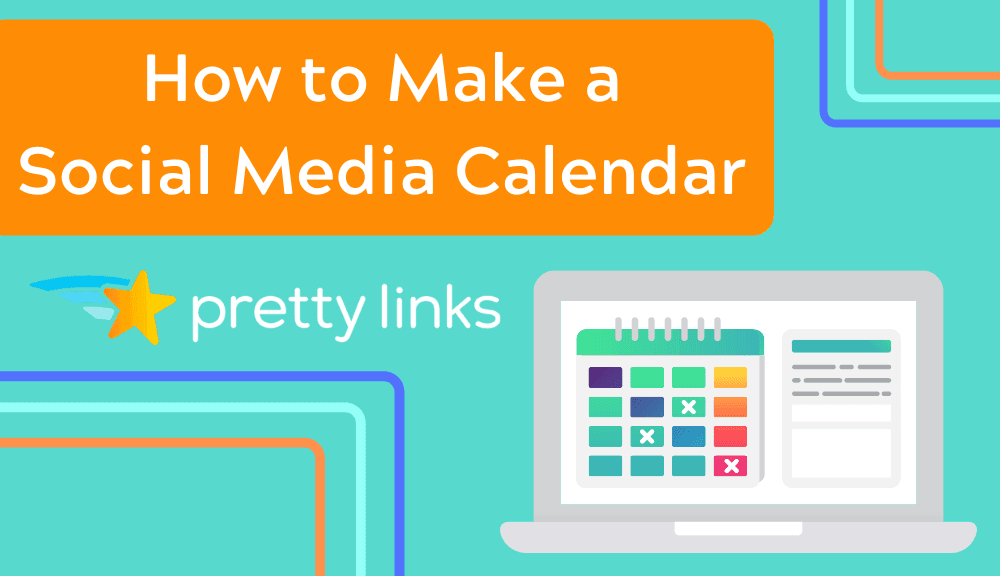
Contents
Maintaining a consistent social media presence is hard work, especially across multiple platforms. It can be challenging to come up with a steady stream of fresh posts and remember to publish them regularly.
That's why a calendar is an invaluable tool for effective social media marketing. A well-designed calendar will allow you to plan, schedule, and monitor your posts, so you can deliver the quantity and quality of content your readers are looking for.
In this article, we'll cover the benefits of having a social media calendar and explain how to make one in three easy steps. Let’s get started!
Why You Should Consider Creating a Social Media Calendar
A social media calendar is a tool for organizing all of your social media posts. This can be as simple as a basic calendar where you plan your posts for each day, or as complex as an interactive spreadsheet with tabs for multiple brands and platforms.
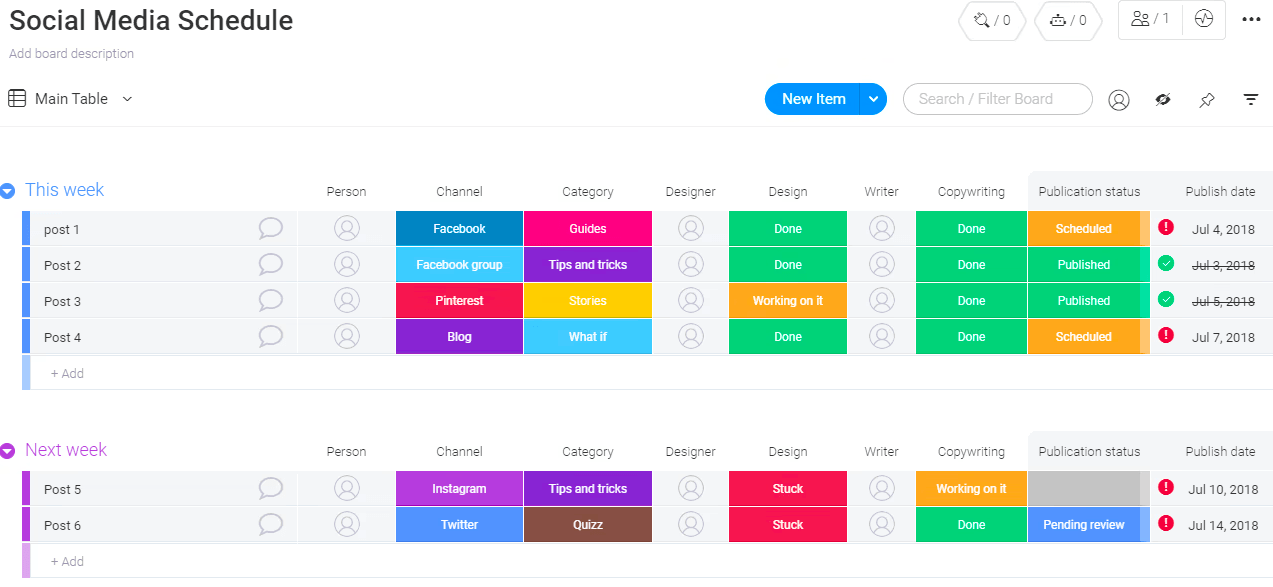
Social media is an important part of the buyer’s journey, and should be carefully planned just like the rest of your business. One key ingredient to any successful social media campaign is consistency. You want to stay visible to your audience and keep them interested with a steady drip of fresh and interesting content. Adhering to a social media calendar will ensure that you post at regular intervals with a healthy variety of pre-planned content.
How to Make a Social Media Calendar (In 3 Easy Steps)
Every social media campaign is different, so no two calendars will be the same. Exactly what works for you will depend on your brand, the social media platforms you use, and your audience. However, you can follow these three basic steps to get the calendar of your choice up and running.
Step 1: Choose a Tool to Create Your Calendar
First, you’ll want to consider how complex your calendar needs to be. If you are just getting started or only post on one platform, something basic like Google Calendar is probably enough to get you started. Just fill in each day with what you’d like to post and where.
Using spreadsheet software such as Microsoft Excel or Google Sheets is another quick and easy option. These platforms let you expand your spreadsheet with additional tabs, formulas, charts, and other helpful functions.
If you have a lot to manage – for example, if you post a lot of new content, run a multi-author site, or have many social media profiles – you may want to pick up software specifically designed for this purpose. In addition, it can be useful to have a tool that integrates right into your website, so you don't have to navigate to a third-party platform.
Fortunately, there are many WordPress plugins to choose from that can help you create a social media calendar. Nelio Content is a great example:
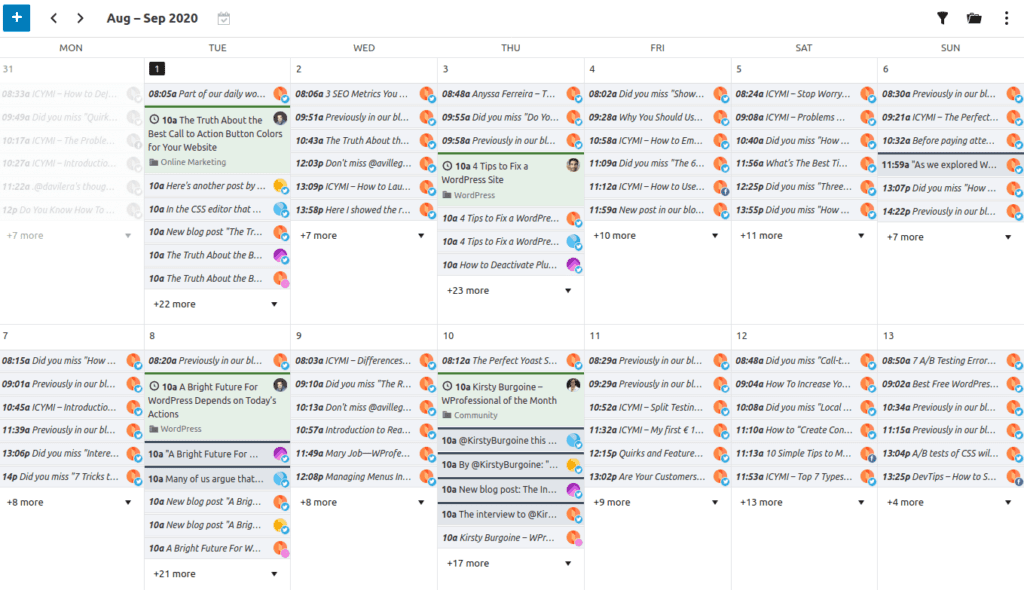
This plugin offers social media calendar software that goes a step beyond the more generic options. You can create posts right in the calendar using an easy drag-and-drop interface.
You can also rearrange posts, filter them, and even connect the calendar to your social media accounts to automatically post at scheduled times. The latter saves you from having to log on to social media platforms every day and ensures that everything is published on schedule.
Step 2: Create a System to Organize Your Calendar
Deciding what to post might sound easy at first, but it can become complicated over time. Without a way to organize and pre-plan your posts, it's easy to fall into the habit of posting the same type of content over and over again, which is rarely effective.
A social media calendar is a great way to see the big picture and form a long-term strategy. For example, a color-coded system can ensure that you are posting a variety of content. A social media calendar for a recipe blog might use color codes like this:
- Red for affiliate posts
- Blue for videos
- Green for recipes
- Yellow for engagement posts
- Purple for contests
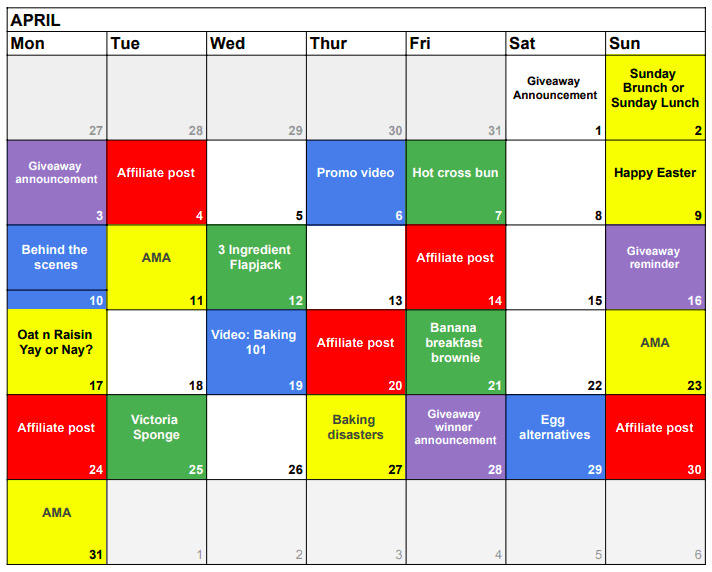
If every week looks like a rainbow, you know you have a strong variety of posts coming up. If you start to see a lot of one color or don’t see color at all, you may want to make adjustments.
Deciding where and when to post can be just as important as deciding what to write about. If you have a presence on multiple platforms (Facebook, Instagram, TikTok, etc.), you will want to consider if you'll post the same content to each, or follow a more customized strategy.
Every social media platform is different and caters to a specific user base. So it's best to make sure that at least some of your content is designed specifically to perform well on each target site. Having distinct calendars for each social media account, different tabs on a spreadsheet or a color-coding system are just a few ways to do this.
If your calendar starts to feel unmanageable, you'll also want to take steps to make it more organized. For example, you can use Pretty Links to shorten cumbersome links, making them more visually meaningful and more manageable for both your calendar and social sites.
Step 3: Track Your Content's Performance Over Time
While there are some universal rules for a strong social media presence, such as posting consistently and interacting with your commenters, every audience is different. Demographics are important when planning your posts, and the best way to learn what works for your followers is to analyze what has been effective in the past.
This means tracking your content's performance over time. Most major social media platforms provide an analytics feature that can give you some insight into your audience's response. Examples include Facebook Business, Twitter Analytics, and Instagram Insights, which help you view trends for your audience and your posts' performance.
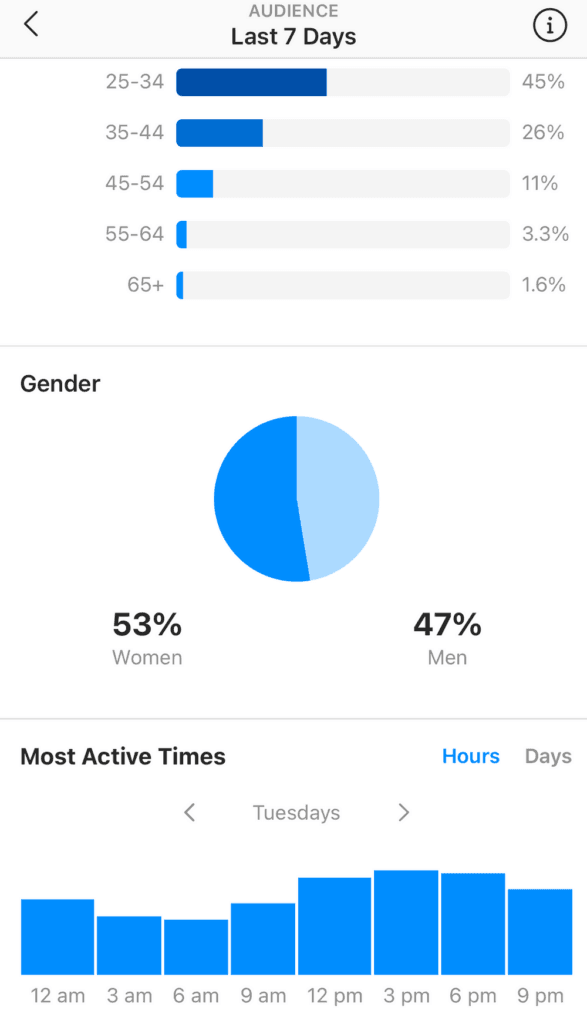
However, these options involve using a third-party platform, which is less convenient than having everything centralized on your own website. So it can be smart to look for a calendar tool that will provide you with access to analytics, or another solution that will integrate this information with your WordPress site.
For example, the aforementioned Nelio Content helps you track the performance of the content in your calendar. Alternatively, you use a tool like MonsterInsights to connect your site with Google Analytics, and find out what social media content is driving users to your site (and what isn't).
This information can also be fed back into the calendar itself. For example, you can record how many likes, comments, and shares each of your posts receives after 24 hours. It's then easy to go back and review this data to look for patterns and make improvements over time.
Conclusion
Maintaining an effective social media presence is easier said than done. It requires a strong strategy to target the right audience with the right content at the right time.
In order to do this, a social media calendar is a great tool. To get the most from your social media calendar, you'll want to:
- Choose the best tool for your needs.
- Create a system to organize your calendar.
- Track your performance to see what works well and what doesn’t.
Do you have any questions about using your social media calendar effectively? Let us know in the comments section below!
If you liked this article, be sure to follow us on Facebook, Twitter, Pinterest, and LinkedIn! And don't forget to subscribe to our newsletter!